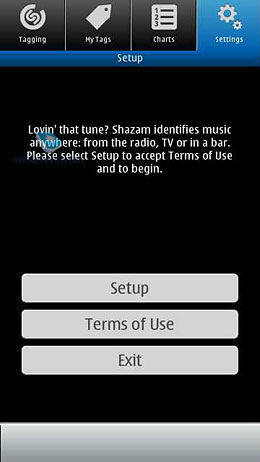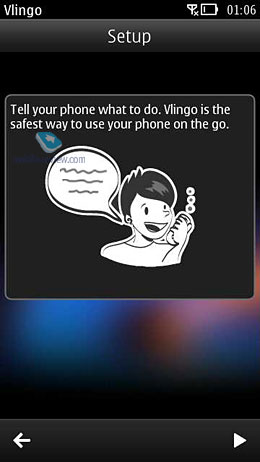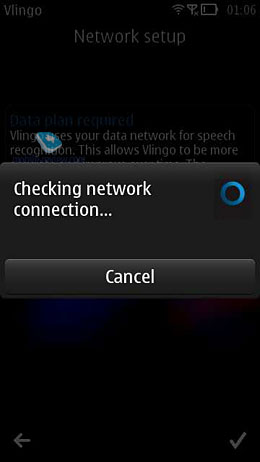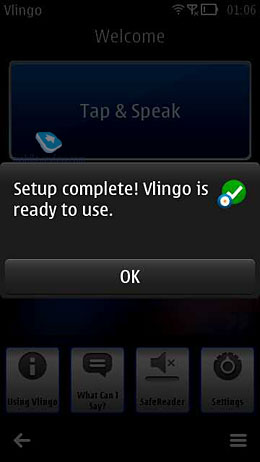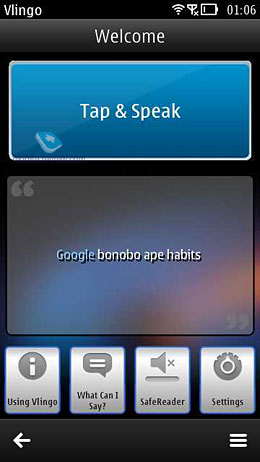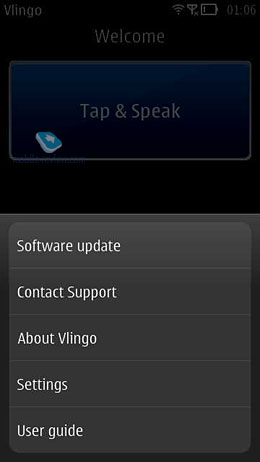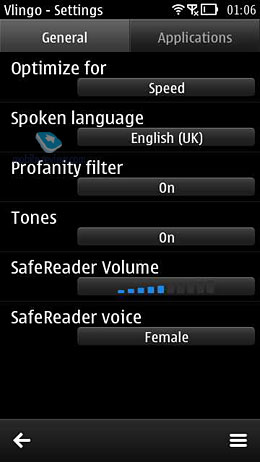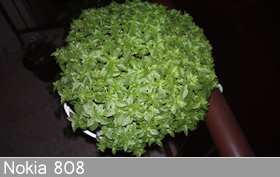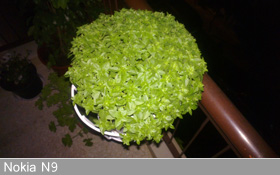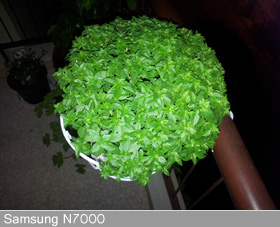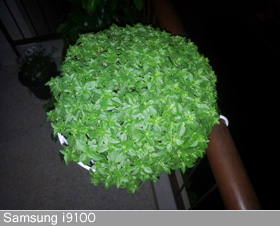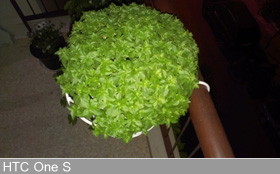Review of Nokia 808
Contents:
- Introduction
- Design, Size and Controls
- Screen
- Battery
- Connectivity
- Platform and Memory
- OS
- Camera
- Conclusion
Introduction
Nokia was always known for trying to create mobile phones that were different one way or the other. At some point they even decided to name their smartphones "mobile computers" to either stand out from competition, just to make an impression or both. Unfortunatelly for them times change and nowadays it is much harder to create something radically different from your rivals, let alone achieving it when most of them are already ahead of you in most crucial departments. This can be seen in the case of both Nokia N9 and Nokia Lumia 800, when both phones enjoyed at least the different design blended nicely with the properly priced material and decent built. Nevertheless, both models were doomed to eventually fail only because their OS was not popular at the time.
This time around Nokia 808 bets on a known although aging OS and tries to set itself apart from the competition courtesy of an extraordinary large image sensor and attractive design.
However, following the announcement of Nokia 808 the company is trying to focus just on the camera features and barely remembers to mention at the end of a carefully designed video or other promotional materials that Nokia 808 is also a smartphone.
It's a well known way to hide the shortcomings of a product that many companies use, when positive features are highlighted to cover up any possible drawback. In Nokia 808's case however this effort is extreme and clearly shows that except from avoiding any mention of the OS the company really believes that any chance of Nokia 808 becoming succesfull rests exclusively on its camera and nothing else.
Subsequently, when I started writting this article I had to keep in mind that while the camera is the main feature of the phone, just like any other mobile phone or a smartphone it has many more parameters that must be described and it should be judged by the combination of the camera and such features. Only camera is not enough.

Design, Size and Controls
When designing a phone that carries a feature so special like the camera in Nokia 808 most of the design has to be based on how to accomodate that camera and create a phone around it. At least that's how Nokia 808 looks like - a phone built around a camera.
Nokia 808's weight is significant and it's the first thing you notice when you hold the device in your hands. The phone is heavy, however if you know that you are holding a phone with a 41 MP camera you will instantly justify that weight or at least accept it. I must mention that Nokia did a good job of "balancing" the phone's weight on the bottom side of the body since otheriwise the weight of the lens would create a very un-even distribution, one that would make holding the phone a frustrating experience.


Since we mentioned the camera's weight it's time to describe the size and how much it differs from other models. I realize that placing a 41 MP sensor along with its optics inside a mobile phone must have been a serious engineering issue, still the back of the phone is dominated by the camera.
Back to the more usual design elements of the Nokia 808. The front of the phone is taken up by the screen for the most part and the three hardware buttons placed under it, which are designed as a single piece. The end call key doubles as a power button since Nokia 808 doesn't have a dedicated key for that role. The top of the front side hosts the earphone together with the front camera and the proximity and ambient light sensors, which are nicely hidden and not easilly visible. The left side of the phone is completely empty, while the right side features the rest of the hardware keys. It would make no sense to create a camera phone with a 41 MP sensor and not use a dedicated shutter key so here it is in the lower part of the right side. Above the shutter key we find a switch for locking and unlocking the phone, the same one that Nokia used in N8 and a few other phones. Last but not least, there is the volume buttons that also play the role of camera zooming keys. On the top side of the phone we find the earphone socket next to the micro-USB connector and the micro-HDMI port which is covered by a plastic cap. The bottom of the phone contains the microphone and a small hole for a wrist wrap. Finally on the back side as I already mentioned there is a 41MP lens and it also hides the phone's speaker. There is also a nice small rubber ribbon on the bottom to prevent Nokia 808 from slipping away when placed on shiny surfaces because of the angle when the camera touches the surface.





Back to the table of contents >>>
Screen
As I mentioned at the beginning of this article times are changing and phone screens have evolved significantly. Nokia 808 is a rare exception. While trying to be a technological achievement with its camera, the model has the same old 640x360 screen that Symbian phones have been using for quite a period of time.
While being an AMOLED screen, which makes use of Nokia's ClearBlack technology, the resolution leaves much to be desired. Given the 4.0" size the low resolution makes things even worse since it's not a rare occasion to be able to see the individual pixels of the screen. Color reproduction however is extremely good as we can expect from an AMOLED screen and the sunlight visibility is also very good which is a welcome feature in a phone designed to spend a lot of time outdoors taking pictures of things around it.
The touchscreen's responsiveness is also very good and owing to the revised OS and the decent hardware, most of the response lags of older Symbian phones are not present in Nokia 808.
Back to the table of contents >>>
Battery
The phone comes with a 1400 mAh battery. Symbian has always been known for its above average power management and since the phone's hardware is nothing above average, the battery should at least provide good stand-by times. In real life this holds true in any case except the camera mode. Even though Nokia 808 easily managed to last for a couple of days of normal usage where taking pictures was just an ocassional feature similar to other phones the active use of the camera drained the battery quite fast. When I tried to take sample photos with Nokia 808 I found out that in less than a day the battery was dead even though almost every other feature of the phone was not used at all.
A whole day of operation is the most I could manage when using the camera for about 10-20 shots.
Back to the table of contents >>>
Connectivity
Nokia was never shy in providing their smartphones with every available connectivity option and Nokia 808 is no exception.
Bluetooth. The 3.0 version of the protocol is used and all the profiles needed are supported like Handsfree, Serial Port, Dial Up Networking, File Transfer and Object Push. Transfer speed is around 1 Mbps.
WiFi. The WiFi module supports b/g/n modes of operation along with DLNA. There is an application available in the phone to create a wireless hotspot using the data connection of your network.
However, I should make a special note here. Given the large amount of multimedia files created with the camera and since Bluetooth does not provide a high speed option Nokia 808 should at least support WiFi Direct in order to make transferring of large files easier.
When using the camera's full resolution each image is larger than 7 MB. Sending 3-4 images to another phone means that Bluetooth has to transfer more than 20 MB of data which is in no way convenient.
USB. Nokia 808 supports all possible USB connection modes with Mass Storage mode and MTP being the most used ones. A PC sync option to be used with Nokia's suite is also available.
Back to the table of contents >>>
Platform and Memory
It remains a mystery to me whether Symbian lacks support for processors more advanced than the ARM11 platform or if Nokia truly believes that they can deliver the performance of more advanced solutions based on a single core A-9 ARM platform. In any case Nokia 808 is built around a 1.3 GHz ARM 11 platform about which not much is known. Nokia 808 is equipped with 512 MB of RAM, which is more than enough for Symbian to perform any task.
It is clear that from Nokia N8 and onwards most Symbian phones have a dedicated chip that handles 2D/3D rendering and video encoding and decoding. This way they manage to provide multimedia capabilities not supported by the ARM 11 platform even at this high speed. The 720p video encoding and playback of older phones is replaced with FullHD 1080p in both recording and playback in Nokia 808. The 3D performance of the phone is not so easy to test since there is no game available to make use of the performance enhancements in this department.
All the multimedia features of the phone are handled easily, and it's only when you come across more resource hungry applications like the internet browser that you realize ARM 11 is in no way an acceptable solution to handle most heavy web pages. Symbian on the other hand runs extremely well and fast on Nokia 808 and proves once more that this OS can be fast and reliable without speedy processors and whopping amounts of RAM.
Back to the table of contents >>>
OS
Symbian has gone through a lot of changes in the last years and not all of them were for the better. In Nokia 808's case we find the version named Belle with the first feature pack on top of that. In phones like Nokia 701 the update will bring a speed upgrade to the CPU up to 1.3 GHz like the one in Nokia 808. Apart from that most changes are aesthetic or vague improvements in stability with the exception of a newer browser version and the addition of Dolby Digital Plus. At least these are the changes mentioned or more correctly highlighted by Nokia. Inside Nokia 808 I discovered a few more additions like the ability to pair controllers from gaming consoles as a controller for the phone. The controllers of all three major consoles (Playstation 3, Xbox 360 and Nintendo Wii) are supported. However I am still to find a game available for Symbian that could actually make use of this feature. Other notable additions include the deeper integration to the operating system of Vlingo's Voice service and a weather forecast application along with Shazam for music recognition.
Some of the operating system's features are described more thoroughly in the next lines. Nokia 808's internet browser deserves probably a separate description although probably not because it's upgraded from the one used in earlier versions of Symbian. Even though in every newer version Nokia promises an even more friendly and better browsing experience, what we always get is the same performance on par with a mid-range Android device, one with worse specs than Nokia 808 or even cheaper Symbian phones.
There is no way the rendering speed can be considered acceptable for a high-end device in 2012. The same applies for the scrolling speed and ease of use inside a web page. Nokia's solution for simplicity was to make most of the more advanced browser settings to either disappear or to be hidden deep inside the settings options.

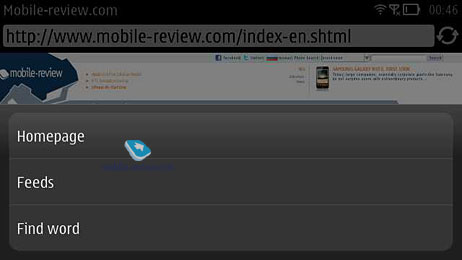
Nowadays, like it or not, most high-end phones rely heavily on social networking and the way they provide ease of access to the most known of them along with having applications for the less known. In Symbian's case this is far from ideal or even true. Nokia 808 has support for just Twitter and Facebook out of the box and there are major drawbacks. Both services are accessed through Nokia Online Service that requires an account to be made on this Nokia service first. I find amusing to say the least the fact that you have to create an account to a Nokia service in order to get access to services of third parties like Facebook and Twitter. Making things even worse is the fact that no other social networking option is available, not even some kind of integration of Microsoft's services, which could be expected from Nokia given the close cooperation between the companies.
Lastly we have a multimedia application conspicuous by its absence. YouTube is probably the most widely used video sharing service nowadays, however Symbian and Nokia 808 lack a dedicated application for it. Instead on the main menu there is an icon of YouTube that simply opens the site's mobile version. Such poor support of YouTube and online video sharing services in general is not acceptable in a high-end solution like Nokia 808 especially as video capabilities of the phone are advertised so heavily.






Back to the table of contents >>>
Camera
Nokia 808 is like no other mobile phone currently available on the market, soon to be released or one that has been available in the past when it comes to the image sensor and the optics used. There have been in the past many cases of phones including some Nokia ones that had cameras more advanced or of higher resolution than their competition. This time around Nokia chose to go extreme and use a 41 MP image sensor and at least in theory leave the competition as far behind as possible. In all honesty in most aspects of its operation and performance Nokia 808 is very different and better than most other smartphones in the photography department. Most of the time and especially when using the camera in the PureView mode Nokia 808 manages to take pictures far better than most if not all other mobile phones available on the market.

Before getting to the part of describing the actual performance of the camera let's take a look at the idea behind the use of such a large image sensor and the possible theoretical and practical advantages.
What goes without saying is that the maximum resolution is bigger even than in some professional DSLR cameras, however in practice it makes use of 38 MP out of 41 MP in 4:3 mode when using the full resolution setting. This means that the image taken will be of high diagonal and with an above average number of details. Well , in the first part everything works as it should and the image is taken in 7152x5368 pixels and is practically huge and of no actual use in most everyday applications. The amount of detail captured in this case however is no better than in most other mobile phones because all of the rest technical limitations imposed in the use of cameras in mobile phones are the same in Nokia 808's case .
One of the many parameters in a digital image sensor is its actual physical size. When you try to fit more photo sensitive diodes into the same space you have to put them closer together and that can cause side effects that affect the image quality. This holds true for mobile phones, compact cameras and DSLR cameras. However the available space for the sensor is different in each of these cases and this helps in using larger sensors in physical size. For the past years in mobile phones the increase in camera resolution was for the most part achieved with sensors of the same physical size but with the sensor's diodes fitted closer together in order to increase the maximum resolution it could capture. Nokia 808's sensor while having to be much larger than the ones normally used in other phones since 41 MP really require more space than let's say 12 MP it also has to follow this rule of limited space. As Nokia is more than happy to say this kind of sensor is used in satellites and other advanced applications, it goes without saying that in those cases the size limitations are different. So putting 41 MP in a mobile phone also requires a very close fitting of the diodes and their actual number is what makes the final sensor bigger than in most other phones and not some special technology used by Nokia.
This is one of the reasons why Nokia 808 while being able to take extremely large pictures in camera's full resolution has in most cases details captured not better than in most mobile phones.
We should now look at another key feature of every digital camera which is the optic parts used. The same limit in size is applied in mobile phones and this limit is always more strict than the same one in compact cameras, let alone DSLR ones where the optics can be separate from the camera itself. In this case Nokia really tried as hard as possible and came up with optics quite advanced for a mobile phone, but still extremely limited in performance compared to the optics used even in many compact cameras.
However the end result is really amazing for a mobile phone and is one of the key factors that make Nokia 808 camera so unique for a mobile phone.
Finally, there is one more technical limitation to Nokia 808. Since its digital photography we are talking about it requires certain electronic parts to be able to capture, handle, process and create the end result out of the data taken from the digital image sensor. There is no platform, no chipset or SoC available on the market today for a mobile phone to handle these tasks from a 41 MP camera. Nokia had to create or use solutions available outside the mobile phone market to be able to actually make this camera work on a mobile phone. This dedicated hardware had to be designed from scratch since no one had ever designed this kind of hardware that could fit inside a mobile phone. Nokia really managed to overcome many technical limitations to achieve that but also once more had to make sacrifices to meet the size goal. So they came up with the hardware needed to be able to handle the processing requirements of the 41 MP sensor with a performance just acceptable enough and slightly above that.
For these reasons in general Nokia 808 is not able to produce the spectacular images that one would expect from a camera with such a large sensor. Nokia found a way to be able to actually use this 41 MP sensor in a practical way that could produce results way above most other mobile phones and they named it "PureView" Technology.
The idea behind this nicely named technology is pixel binning or put more simply the use of more than one pixels of the camera sensors to create each pixel in the image created. Using simple mathematics to be able to create a 5 MP image when using a 41 MP sensor you can use up to 8 different pixels from the sensor for each pixel of the image taken. Pixel binning is exactly the technology or the idea of using more than one pixel's information and combine them to create the best possible result. This processing can be quite challenging both in writing the corresponding algorithm and in having the power to process the information. Nokia tried hard and found a way to achieve that for a mobile phone.
When using Nokia 808's camera in the PureView mode the sensor is used in its full resolution and since it can take up to 8 times the information a 5 MP sensor could or up to 5 times of an 8 MP sensor this information is combined from 5 different pixels or 8 depending on the setting for the final image to be taken. In this mode Nokia 808 manages to create very good images at least when judged for a mobile phone. The available detail in each image is above average and the color reproduction is as close to the actual scene. In PureView mode Nokia 808 manages to outperform all other mobile phones in most scenes and lighting conditions with the second one being helped by the XENON flash that is used instead of the simple LED flash in most phones.
The last feature of the Nokia 808 that is heavily advertised by Nokia is the ability to zoom when taking a picture using the digital zoom without the loss of detail when using any other phone. This is also achieved by using the whole 41 MP sensor to capture an 8 MP image and it's done once again with the help of the sensor's available resolution to focus on a smaller field of view. In essence the same principle behind the PureView technology is used only the other way around this time. The phone just crops the field of view that corresponds to up to one third of the maximum one being seen by the large sensor and uses the pixels available in that one third to create the image. In this mode however there is no kind of optimization from the PureView technology since it's just a case of presenting in a larger physical size the part of the view available to the sensor which would otherwise be presented in a smaller part of an image taken at the maximum resolution.
One last thing of note is the most important one. Nokia 808 can in no way match a professional digital camera in image quality and color reproduction. The same technological limitation that had to be either overcome completely or compromised to be able to fit a 41 MP sensor inside a mobile phone are the reasons behind as in any other application of digital imaging sensors every other key aspect of a good camera like the optics used and the hardware needed to process the information will always be better than the ones of Nokia 808 both because of the larger physical size and because even from an economical point of view the hardware which cost has to be just a part of the overall price of a mobile phone will never become as powerful as the one used in professional DSLR cameras that cost several times more than a mobile phone in most cases.
Comparing Nokia 808 with any other mobile phone when it comes to the imaging department is a comparison that makes sense and will come up with Nokia 808 almost always being the winner. Comparing Nokia 808 with professional cameras just because the Nokia 808 has a 41 MP sensor will always lead to Nokia 808 loosing the comparison since in this case the sensor's resolution is not even close enough to make the comparison in favor of the phone.
Back to the table of contents >>>
Conclusion
There is no way to review Nokia 808 without focusing on its camera, while you cannot review a phone without focusing on at least most of its notable features. This is also true about Nokia 808 as a phone for every potential buyer. It is impossible to pay no attention to the camera but there is also no way we can avoid the many shortcomings of the OS and some inecxusable mistakes like the poor screen resolution in such a high-end phone. Nokia as a company is in a place where one of the last things they have to use and stay on the market as a respectable company is to make use of their vast resources, the same ones that were so poorly organised and used in the past and still are for the most part work in favor of Microsoft's mobile operating system. Using a 41 MP sensor in a mobile phone while not so crucial for most people is no small engineering achievent. Creating and optimizing image proccessing algorithms in order to make good use of the sensor is also not easy. However all of these are just reasons to respect and admire perhaps the technological abilities of Nokia or now that I think of it, a very good reason to feel sorry for the way the company is run nowdays and what the future holds for Nokia. None of these are reasons to buy a mobile phone though, even for most loyal Nokia and Symbian fans that are getting tired of being deprived of many features and functions available in other solutions. Nokia 808's perfomance in everyday use is in no way a match for Apple's iPhone or Samsung's Galaxy S III or even Galaxy S II for that matter. When you set the extraordinary camera aside there are phones that cost half as much as Nokia 808 and can perform better in everyday use.
Nokia is making one of their last efforts to attract customers and provide the networks and their partners with something that can be advertised and sold. At least in that case a 41 MP camera will probably make the sell easier than any possible reason to buy a Lumia Windows phone. I really think that Nokia 808 will find some buyers willing to spend the money needed to experience the difference of the 41 MP camera but I also think their numbers will be below Nokia expectations.
Do you want to talk about this? Please, go to our Forum and let your opinion be known to the author and everybody else.
Back to the table of contents >>>
Related links
Martin Elm (martin.elm@mobile-review.com)
Published — 07 June 2012
Have something to add?! Write us... eldar@mobile-review.com
|








